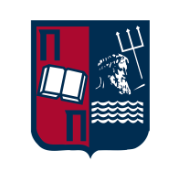Digital Communications |
|
|---|---|
| Professors | George Efthymoglou (Department Chair) Demosthenes Vouyioukas |
| Course category | Core |
| Course ID | DS-305 |
| Credits | 5 |
| Lecture hours | 3 hours |
| Lab hours | 2 hours |
| Digital resources | View on Aristarchus (Open e-Class) |
Learning Outcomes
The aim of the course is to study digital modulation and demodulation techniques in baseband and bandpass telecommunication systems. It presents the detection theory of transmitted communication signals using the method of matched filtering and correlation. The course also covers the analytical evaluation of the performance of digital modulations in additive white Gaussian noise (AWGN) channels in terms of symbol error and bit error probabilities. Finally, an introduction to OFDM multi-carrier transmission and reception is given.
Upon successful completion of the course the student will be able to:
- Understand the detection theory of digital transmission for baseband and bandpass communication systems.
- Understand the modulation techniques of ASK, FSK, M-FSK, PSK, DPSK, M-PSK, M-QAM and OFDM.
- Obtain analytical expressions for the probability of symbol error of various digital modulations in AWGN channel.
- Understand the pros and cons of various digital modulations in terms of achievable bit rate, error performance, and spectral efficiency.
- Understand the need of using OFDM in multipath channels.
- Make simulation models in Matlab/octave in order to evaluate the symbol and bit error probability performance of digital modulations in AWGN.
Course Contents
- Baseband transmission methods and probability of error for matched filter detection in AWGN.
- Binary passband modulations: ASK, FSK, and PSK.
- M-ary signalling: M-FSK, M-PSK, and M-QAM.
- Demodulation techniques for digital passband modulations and symbol error performance in AWGN channel.
- Spectral efficiency of digital modulations.
- Digital filters for zero intersymol interference at the receiver.
- Noise figure, composite noise figure and noise temperature, calculation of effective receiver temperature.
- Link budget analysis.
- Channel coding, convolutional codes and Viterbi algorithm.
- OFDM transmission and detection.
Recommended Readings
- Proakis J. & Salehi M. (2001): Communication Systems Engineering, 2nd Edition, Prentice Hall.
- Sklar B. & Harris F. (2020): Digital Communications: Fundamentals and Applications (Communications Engineering & Emerging Technology Series from Ted Rappaport), 3rd edition, Pearson.

